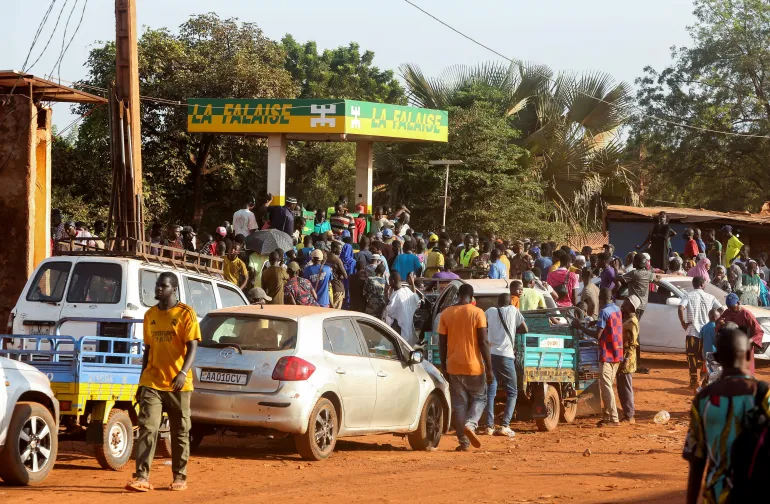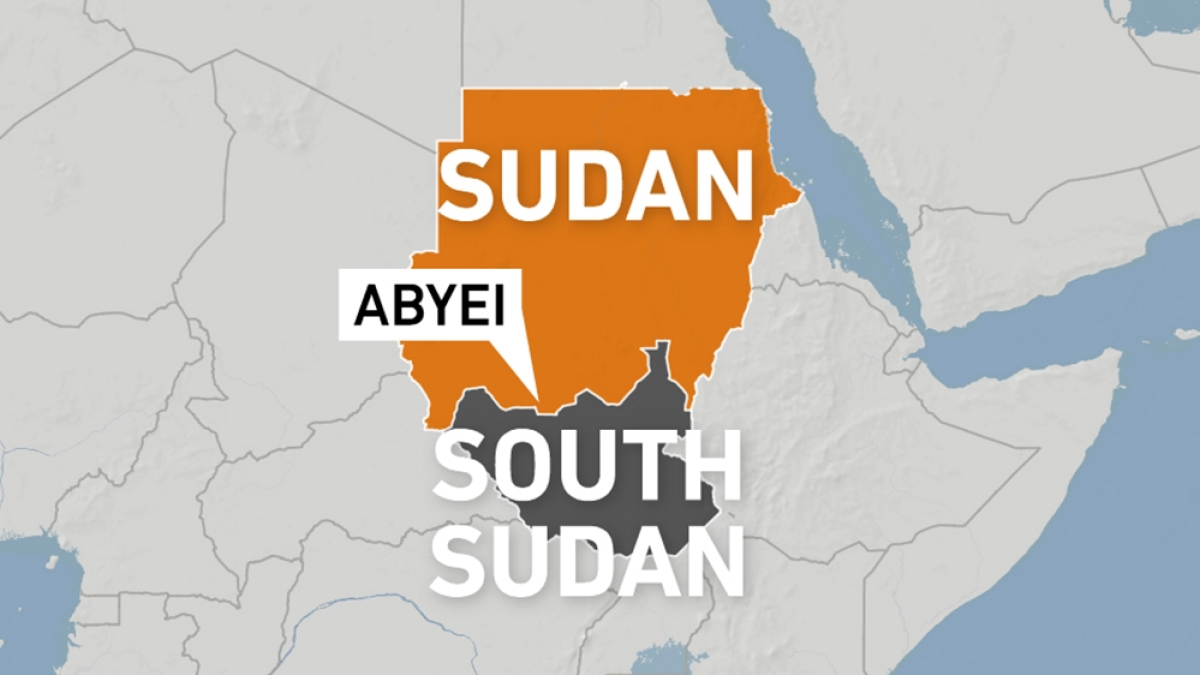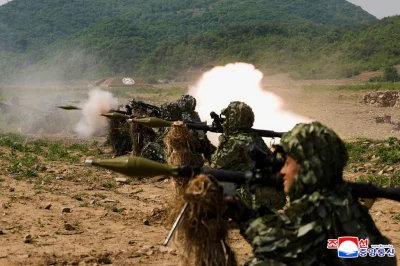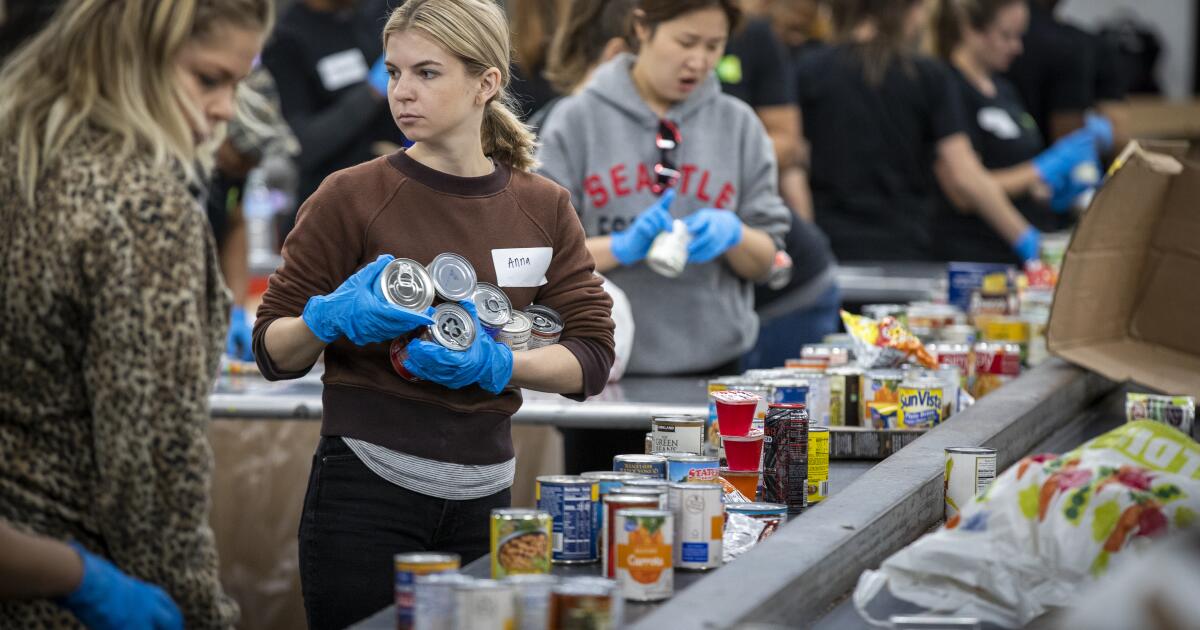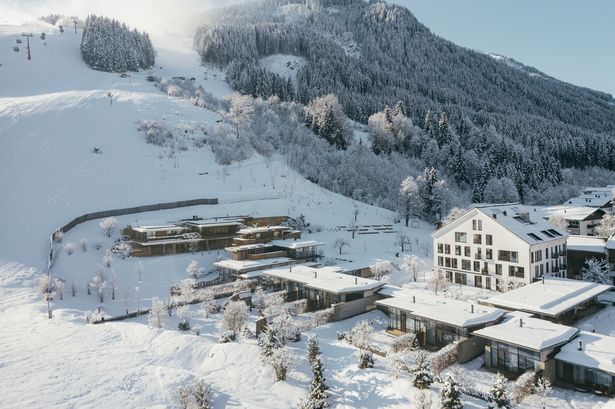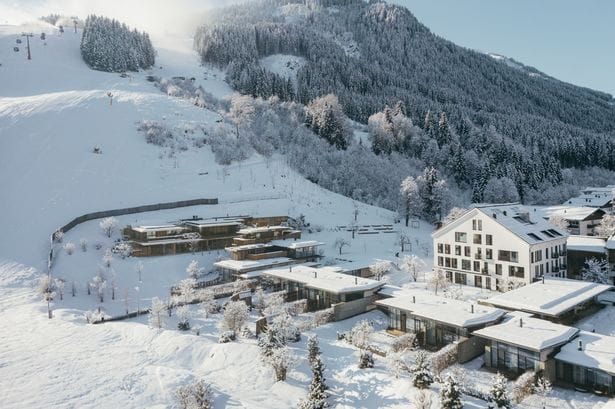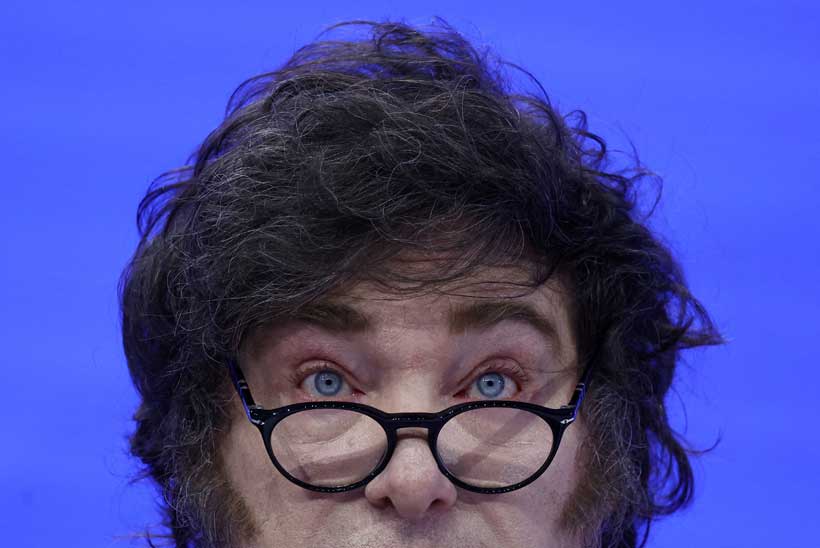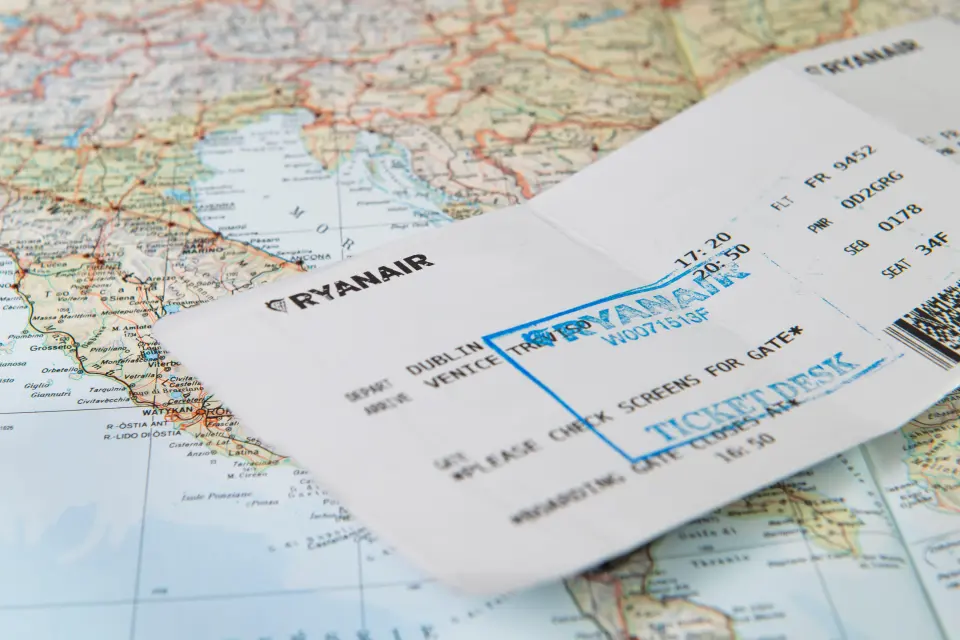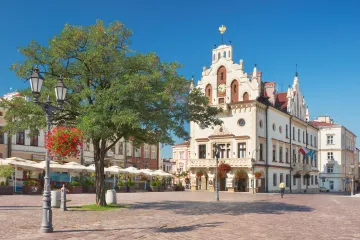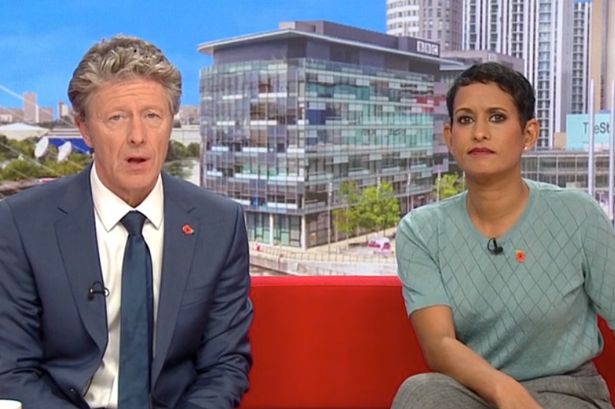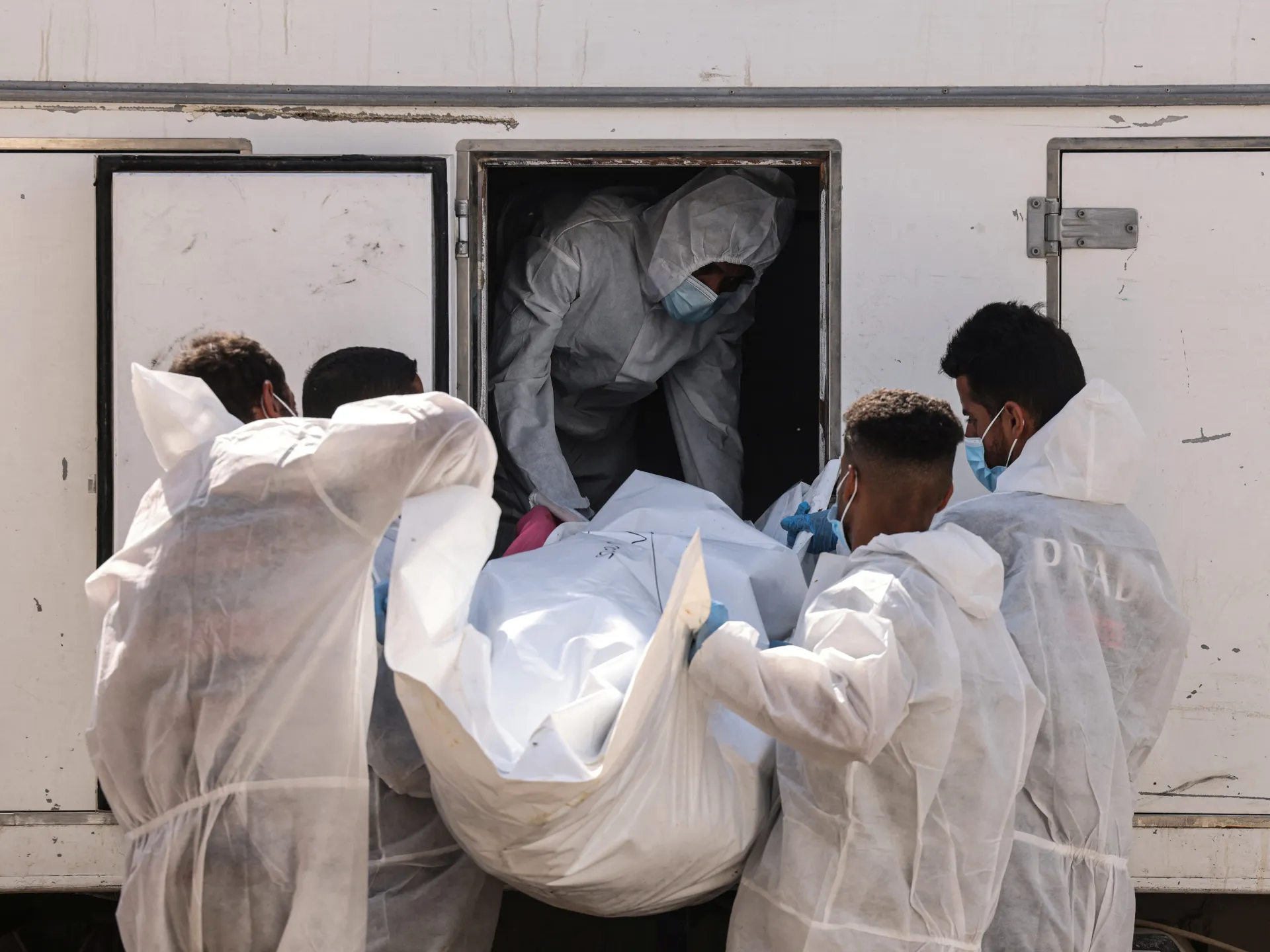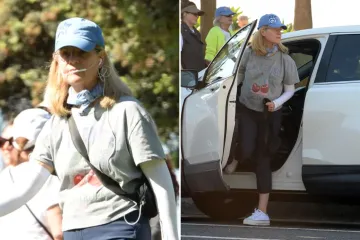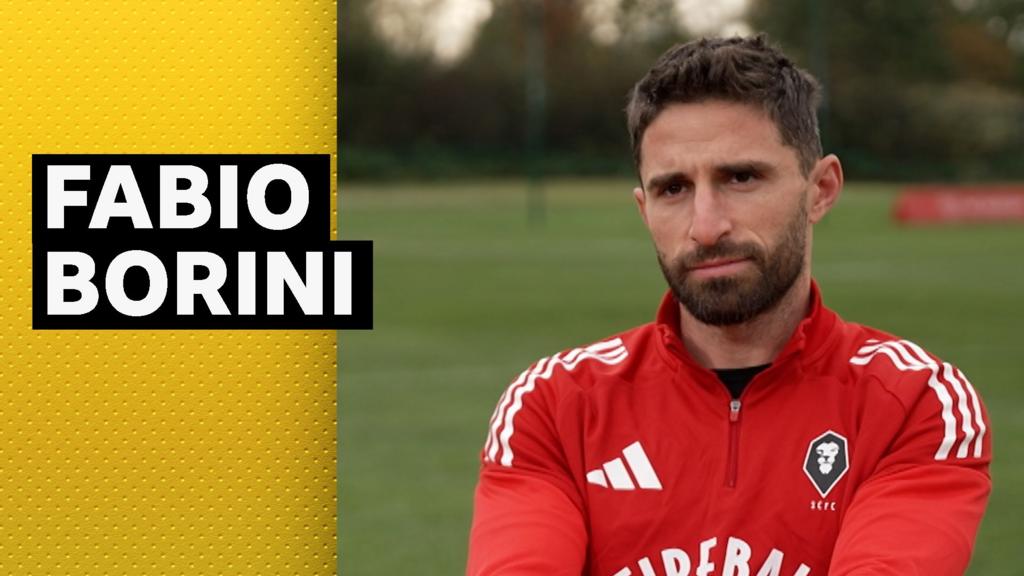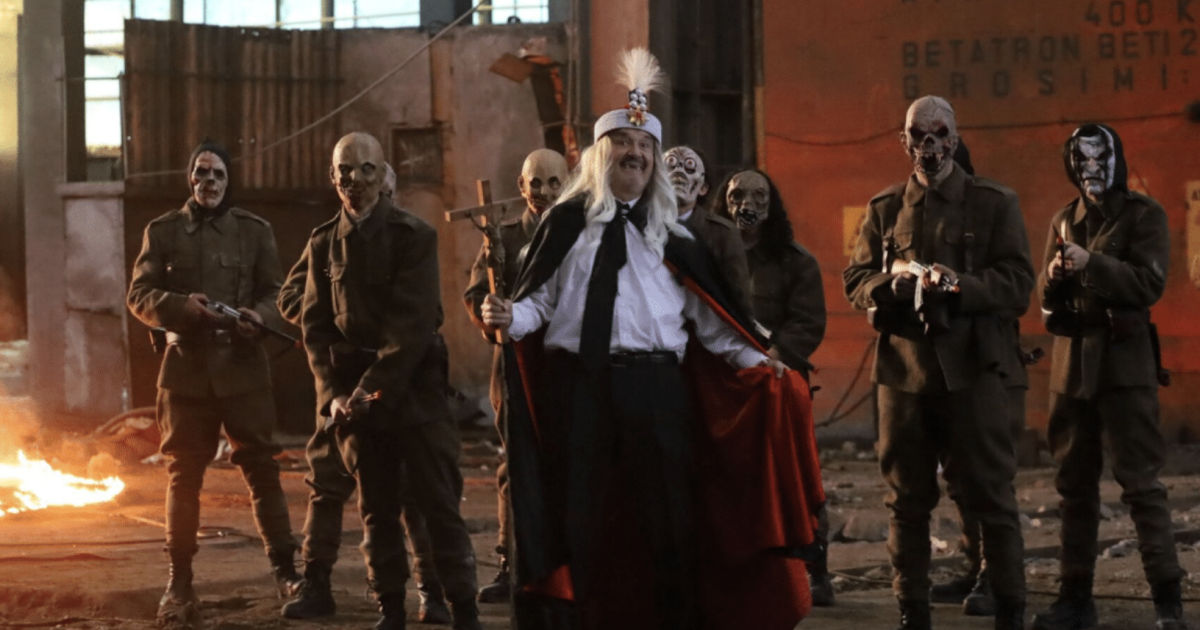Best pumpkin spice lattes and seasonal fall drinks to try in Los Angeles
“We don’t really eat pumpkin, but we eat a lot of kabocha,” said co-owner Jonathan Yang. “My wife, Julia, and I love kabocha but not all people know it, and we realized this is a neat way to highlight that kabocha is pretty much like a Japanese pumpkin.”
Thank You Coffee’s KSL derives its chief flavors from a blend of toasted spices including cinnamon, nutmeg, cloves, cardamom and ginger, which are turned into a syrup with a combination of white and dark brown sugars and ginger bitters; it all gets steeped and strained. Yang steams fresh kabocha squash, then purées it and incorporates it into the spice syrup, adding depth without detracting from the spices, he says. In both locations, a hint of condensed milk is added to the lattes, and they’re dusted with kinako, a roasted soybean flour, for added earthiness and a pie-crust effect. This year they’re adding another fall-inspired drink to the menu at both locations: a persimmon-and-apple latte that’s meant to evoke coziness and comfort throughout the season.
New restaurants and pop-ups to try in Los Angeles in November 2025
Los Angeles food drives and turkey giveaways for November and Thanksgiving
Over 5 million California residents — including 2 million children — rely on the Supplemental Nutrition Assistance Program benefits that cover essential food such as fresh fruit and vegetables, meat, dairy, bread and snacks. Those funds are on hold as the federal shutdown continues, putting economic strain on the 1 in 8 Americans who rely on SNAP benefits, during a time of year when budgets are already tight as many prepare for holiday gatherings and gift giving.
But Angelenos are stepping up for those in need, from neighborhood nonprofits and community centers to local restaurants and chefs, offering grocery delivery, mobile farmers markets, grab-and-go meals and Thanksgiving spreads.
Here are 40 food initiatives happening across Los Angeles County this November, from free chicken rice porridge on Sundays to a communal Thanksgiving feast. Be sure to read details carefully; some events are open to all with no registration required, while others require advance sign up with proof of income and residency.
Times staff writer Kailyn Brown contributed to this report.
‘Anniversary’ review: Beware your authoritarian-leaning new girlfriend
Polish director Jan Komasa might be best known in the United States for his 2019 Oscar-nominated film “Corpus Christi,” but his biggest box-office success was in Poland for his 2014 film “Warsaw 44,” about the Warsaw Uprising, the bloody effort by the Polish resistance to expel the occupying German army from the city toward the end of World War II.
Komasa knows authoritarianism in its most flagrant, brutal forms, but his new film “Anniversary” imagines a scenario in which fascism doesn’t stomp in, jackbooted, but creeps, pretty and ladylike, on kitten-heeled feet. It’s a thought experiment more than anything else, from a story by Komasa and Lori Rosene-Gambino, the latter who wrote the screenplay.
“Anniversary” maps five years in the life — and obliteration — of an American family, a microcosm of a larger rapid political devolution that turns suburban utopia into a dystopia with a speed that could make your head spin.
Meet the Taylors — we’ll get to know them across reunions and celebrations starting with an anniversary party for Ellen (Diane Lane) and Paul (Kyle Chandler). She’s a professor at Georgetown, a public intellectual caught up in the university culture-wars debate; he’s a chef, and they have four children upon whom they dote: Cynthia (Zoey Deutch, also in this week’s “Nouvelle Vague”), an environmental lawyer, Anna (Madeleine Brewer), a provocative comedian, high-school science nerd Birdie (Mckenna Grace) and brother Josh (Dylan O’Brien), a nebbishy, struggling writer. The camera knits them all together in long shots, swirling around their idyllic backyard.
Josh has brought home a new girlfriend, Liz (Phoebe Dynevor, of 2023’s “Fair Play”), who is carefully coiffed and poised, immaculately presented and mannered, though her perfection gives his sisters pause. After the introductions, she and Ellen have a quiet, awkward moment together. As one of Ellen’s former students, Liz wrote a thesis that scandalized the professor, which Ellen describes to her husband as having “radical anti-democratic sentiments,” advocating for a single-party system. The title? “The Change.”
While Liz says she “came here with the best of intentions” and claims she and Josh were introduced by their shared agent, Ellen is suspicious and rightly so. The enigmatic Liz is mild-mannered and quiet, but her ideas are anything but. As she hugs Ellen, she whispers, “I used to be afraid of you but I don’t think I am anymore.” That is never more clear than when she sends Ellen a copy of her newly published book, “The Change,” dedicated to “the haters, the doubters and the academic stranglers.”
Two years later, the Change is officially afoot. Liz is a celebrity, now working with a mysterious organization called the Cumberland Company. She and Josh are married, pregnant with twins, and he’s achieved a conservative glow-up. New flags are popping up in the Taylor’s well-heeled neighborhood and things are shifting in ways that make Ellen uncomfortable, enraged even. But in the spirit of politeness and family unity, she acquiesces to Paul’s desire for a nice family Thanksgiving, despite their political differences.
Therein lies what might be “Anniversary’s” biggest warning: Don’t let the fox into the henhouse, even if it seems rude not to. Ellen maintains an appropriately wary distance and skepticism of Liz, but Paul’s fatal flaw is his assumption of good faith. He hasn’t even read “The Change” because, frankly, he doesn’t want to know. But as Liz attaches herself to Josh like a parasite, perhaps in an attempt to enact revenge on her former professor, so too do the other Taylor children topple as the nation changes under their feet.
Some might find “Anniversary” too vague: What, precisely, is Liz’s political stance that makes her so powerful and so repugnant to Ellen? She has advocated for a “single-party system” branded under the guise of “solidarity,” but the result is an autocratic surveillance state that suppresses free speech, upheld by a violent paramilitary police force. The film never gets into the specifics, perhaps because the only ideology of fascism is the concentration of power. “Anniversary” suggests the rhetoric doesn’t matter when we can turn on each other so easily, humanity and freedom crushed under such a state.
It is fascinating that recent movies that attempt to grapple with contemporary sociopolitical issues often feminize the threat: the #MeToo cancel culture fable “Tár” or this year’s academia scandal film “After the Hunt.” “Anniversary” situates a nonthreatening woman as the vessel for such evil, even as Liz’s male host, Josh, starts to embody the most extreme outcomes of what she has set in motion.
“Anniversary” is a deeply nihilistic film that can’t be described as a cautionary tale — that horse has already left the barn. Rather, it’s a hypothetical question as character study, an examination of how this happens and an assertion that a system like this shows no mercy, not even to its most loyal subjects, despite what we want to believe.
Walsh is a Tribune News Service film critic.
‘Anniversary’
Rated: R, for language throughout, some violent content, drug use and sexual reference
Running time: 1 hour, 51 minutes
Playing: In wide release Wednesday, Oct. 29
Bitter Old Firm rivals united in chaos
Chris McLaughlinScotland sports news correspondent
 SNS
SNSWhen Glasgow’s two main football clubs meet at Hampden Park, winning means everything.
But rarely has there been such a curious build-up to a fixture that hardly needs a sideshow.
In Scotland, when chaos comes knocking at the doors of Celtic and Rangers, it’s headline news.
And, lately, neither Old Firm club has been short of turmoil.
That might sound overstated to the casual observer or those outside Scotland’s central belt, but in few UK cities is football so deeply woven into the social fabric as it is in Glasgow.
This time, though, there’s an unusual symmetry: both clubs are struggling, on and off the pitch, at the same time.
Indeed both dugouts will feature different managers from when the rivals last met and played out a goalless draw at Ibrox on 31 August.
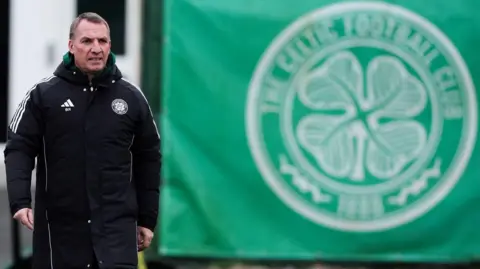 PA Media
PA MediaIn Glasgow it is rare for both clubs to be in what some would describe as a state of “crisis” at the same time.
For over a decade, Rangers’ turbulence has provided their rivals with a steady diet of schadenfreude, but ahead of Sunday’s League Cup semi-final, both clubs have been fighting for the negative headlines.
In the east end, Celtic fans have spent weeks protesting against a board they see as out of touch.
Manager Brendan Rodgers seemed to validate their frustration when he publicly criticised the club’s failure to strengthen the squad in the summer.
Missing out on the lucrative Champions League only fuelled the unrest – and appeared to justify his complaints.
After years of harmony, success and near-total domestic dominance, all was not well inside Parkhead – and something had to give.
That “something” was Rodgers’ unexpected resignation, swiftly followed by a blistering attack from Celtic’s major shareholder, Dermot Desmond.
The Irish businessman, usually a reserved figure, has quietly controlled the club for three decades.
But in a rare public statement, he accused Rodgers of being divisive, self-serving and of misleading fans.
In football language it was a two-footed challenge with studs showing.
Rodgers has yet to respond.
The ferocity of Desmond’s comments pulled back the curtain on tensions that had been simmering for some time.
And they may have signalled the end of the unity Celtic once prided itself on.
Rogers has been replaced in the dug out, for now, by former manager Martin O’Neill and ex-player Shaun Maloney.
For fans, the dismay wasn’t just about the public fallout, but that it was usually Rangers who cornered the market in mayhem.
Across the Clyde, Rangers’ troubles are nothing new.
Since the club’s financial collapse in 2012, supporters have lived through regime changes, court battles, managerial misfires and even liquidation.
Many feel they’ve endured enough. But in Glasgow, football isn’t a pastime. It’s an inheritance.
That’s something the club’s new American owners are discovering fast.
When he was appointed head coach in the summer fans warned that Russell Martin wasn’t the right fit.
But the consortium stood firm, keen to project authority.
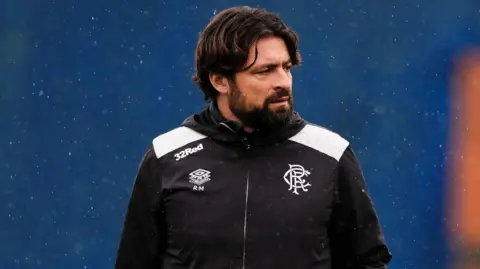 PA Media
PA MediaSeven games and a torrent of venomous protests later, Martin was gone.
The owners admitted they had underestimated the intensity of Glasgow football.
They’re not the first, and they won’t be the last.
Unlike O’Neill, who managed Celtic from 2000 to 2005, new Rangers head coach Danny Rohl will experience his first Old Firm match on Sunday.
The appointment of the former Sheffield Wednesday manager ended a protracted search for Martin’s replacement.
For once, both sets of supporters share a common cause: a desire for change in the boardroom. History suggests they often get what they want.
But this isn’t just a Celtic and Rangers story. Both clubs are now glancing along the M8 with unease, toward a challenger that dares to dream.
Heart of Midlothian sit top of the table and have the backing of Brighton owner Tony Bloom, the data-driven investor who helped transform the Premier League club.
When Bloom promised Hearts fans an end to Old Firm dominance within a decade, many dismissed it as hubris.
Given it hasn’t happened in 40 years, you can understand why.
Yet Bloom’s methods – and the unity around Tynecastle – are making people wonder if this could be the season the Glasgow duopoly is finally broken.
Whatever happens come May, unity is something Celtic and Rangers would pay good money for right now as they prepare to do battle once again.
‘I went skiing for the first time – one piece of advice proved to be useless’
I took to the slopes for the first time in the glorious Saalbach-Hinterglemm, Austria, and was left wondering why I’d waited so long to try skiing – but one piece of advice was useless
When I excitedly told friends I was off to Austria to ski for the very first time, nearly 30 years into my life, the seasoned skiers among them looked a little nervous. “It’s definitely easier to learn when you’re younger,” they warned me.
So I immediately did what any late millennial would do, and took to TikTok in the hope of becoming a pro skier without ever having set foot on the slopes. In the weeks leading up to the trip, I spent every spare minute watching ski instructors share their tips for beginners, before practising the techniques – static – in my living room.
However, it all began to feel very real when we arrived in Saalbach-Hinterglemm in the heart of the Austrian Alps, where the Alpine Ski World Championships were held back in February
We checked in to the uber-modern Wiesergut, a ski in, ski out hotel built on the site of a 14th-century manor, which looks like something straight out of Architectural Digest.
READ MORE: Spain’s 5 warmest winter sun destinations for December escapesREAD MORE: Europe’s little-known Christmas market with 86p mulled wines and £32 flights from the UK
My spacious bedroom exuded understated urban chic, with a soaring double-height ceiling, floor-to-ceiling windows and a sophisticated mix of natural materials like wood, stone and linen. Luxurious Aesop toiletries lined the bathroom shelves and, to my delight, there was even a Dyson Airwrap for fixing up soggy helmet hair. The room also came with its own fireplace and a hot tub.
I couldn’t get my skiwear on fast enough but, once dressed, I took one look in the mirror and felt like an imposter. Staring back at me was the definition of “all the gear, no idea”. Luckily, there was another newbie in the group and the pair of us headed out for a lesson on the baby slopes, just a stone’s throw away from Weisergut.
I quickly discovered that my TikTok ski lessons had taught me next to nothing, but soon got to grips with finding my balance, turning and slowing down – very important in order to avoid any Paltrow-esque ski crashes.
After two hours of “pizza and French frying” our way down the baby slopes, we’d certainly worked up an appetite, and 1,500 metres up Reiterkogel mountain, Wieseralm provided the perfect location to refuel. A sister to the Weisergut, the mountain restaurant offers alpine classics such as Kaiserschmarrn, cheese dumplings and Viennese schnitzel. We were treated to a host of other decadent delights including truffle carbonara, buttery mash, fillet steak and king prawns.
Each time we thought we were done, the servers brought out another course, each as impressive as the last, and they made sure our wine glasses were never empty. Forget skiing backdown the mountain – we could have just rolled down.
Some 30km away, nestled in the beautiful Leoganger mountain range, sits Priesteregg, a five-star eco resort with its own picturesque mountain village.
Sixteen charming chalets are dotted on a steep hillside, each adorned with scarlet geraniums in the window boxes, wooden deckchairs softened with sheepskin throws, flickering candles and log fires waiting to be lit.
Smiling girls in floral dirndls welcomed me with a hot coffee before I headed to the Priesteregg BAD (spa) for wellness treatments.
I went for a swim in the Himmelbecken, an outdoor infinity pool that offers a magnificent view of the Hochkönig mountain, before taking part in a yoga class on the terrace over looking it. The yoga instructor then took us through an incredible guided breathing session using the Wim Hof method in preparation for a cold plunge at the Naturbecken pool.
To my surprise, I enjoyed every second of the dip, and barely noticed the cold even as I climbed out into the rain. I don’t know if this was the effect of the breathwork, or if the breathtaking scenery simply offered the perfect distraction from the discomfort.
I’ve never slept more soundly than I did in my bedroom at the chalet. Situated on a high plateau facing the mountains, the chalets offer stunning views, including a glimpse of the nearby luminescent man-made glacial lake.
It’s hard to imagine a more indulgent start to the day than the Priesteregg breakfast, served in your chalet. You wake to the soft sounds of quiet preparation, and when you step into the living space, it has all been laid out – candles lit, coffee brewing and the table laden with platters of local ham and cheese, fresh fruit, yoghurt and still-warm breads and pastries. All that’s left for you to do is cook the eggs and bacon, if you fancy it.
The nearby town of Leogang is worth exploring, including Mama Thresl – Priesteregg’s cooler, more casual sister hotel – which provides easy access to the gondola for those wanting to ski or snowboard. But given Priesteregg’s panoramic mountain views, one-of-a-kind wellness area, incredible on-site cuisine and warm Austrian hospitality, it’s a wonder anyone would leave.
How to book
Rooms at Priesteregg Premium Eco Resort (priesteregg.at/en)start from £296 B&B per person, per night in a Berg MountainChalet (based on two sharing).
Rooms at Wiesergut (wiesergut.com) start from £332B&B per room, per night in a Manor Suite Bliss.
Rooms at MamaThresl (mama-thresl.com) start from £170B&B per room, for two people in a Wooden style double room.
Argentine Midterm elections. And the winner is… Donald Trump
No one anticipated last Sunday midterm election result in Argentina. Not even the executive, that faced a dire situation on the way to the election. Unexpectedly, Donald Trump himself came to President Milei’s rescue and the election´s results surprised everyone in the Argentine political spectrum.
The political campaign couldn´t be worse for the incumbent. First, in early September it lost a provincial election in key Buenos Aires province (home to 40% of Argentines). Second, Milei’s sister and top political advisor was accused of bribery. Third, his top candidate for national lawmaker at, again, the crucial Buenos Aires province had to step down amid accusations of being funded by a suspected narcotrafficker. Fourth, even though Milei has been very successful in slashing inflation, from over 200% annually to around 20%, this came with a hefty price. He cut subsidies to poor families and utilities, increase interest rates and open the economy to imports. According to the World Bank, economic activity plummeted a 1.7% in Milei’s first year in office while projections for 2025 economic growth hover around 3% to 4%. Finally, the Argentine peso faced strong devaluation pressures for several weeks prior the election that dried good part of Central Bank´s reserves.
It was at this point that Trump stepped in. He gave a 20bn US$ bailout that kept the peso´s devaluation under control during the crucial days previous to the election. He even offered to increase the economic assistance to 40bn depending on the elections’ result. Trump defied internal criticism, both from Democrats and Republicans for giving money to record high foreign debt defaulter Argentina.
Astonishingly, the election’s result couldn´t be better for the government. It won at the national level with over 40% of the votes while the Peronist got 35%. It won in all but 8 of the 24 provinces, including Peronist stronghold, Buenos Aires province. It has greatly increased the president´s party congressional power, giving him the chance to defend his presidential decrees and vetoes and even advancing crucial legislation with the help of allies. Key among Milei´s projects is the reform of the 1974 labour law. This law repeatedly resisted reform attempts by pro market administrations in the past and has been blamed for Argentina´s far from successful private sector performance.
At the same time, the election has weakened the Peronists presidential aspirations since this voting could not produce a clear leader in their political arc. The same goes for other opposition candidates with presidential ambitions. In sum, this election has infused new life to the Milei administration and gave him the chance to pursue his agenda with renewed strength.
The other big winner is Donald Trump. He has successfully influenced an election in one of Latin America’s largest country. From here on, Argentina’s alliance with the US will only deepened. In the mind of those who voted Milei for president and were now doubting whether to cast their ballots for him again, the US support acted as a huge catalyst in making up their minds. The group of those seeking a profound alliance with the US in Argentina (traditionally an anti-American country, as Latino Barometer polls has shown across the years) has only grew.
Nevertheless, one important pitfall lies ahead: Argentina’s relations with China. China is currently Argentina’s major trading partner while the US ranks fourth after Brazil and the EU. Former Brazilian president and Trump ally Jair Bolsonaro faced the same situation: he tried at first to sever its economic ties with Beijing, only to find massive opposition from exporters at home. Will political affinity trump (no pun intended!) trade interests? The Argentine case will act as a litmus test of the future of the relationship between the US, Latin America and China.
New Ryanair rules to start this MONTH and it could catch out thousands of passengers
RYANAIR’S new boarding pass rules are being rolled out this month – and passengers could face being caught out at the airport.
From November 12, the budget airline will no longer offer printed boarding passes.

Desks at the airports will no longer offer the option to print them – which currently has a fee of £55.
Instead, passengers will have to use the Ryanair app to get their mobile boarding pass.
However, it is thought as many as 15 per cent of Ryanair passengers don’t use smartphones.
CEO Michael O’Leary said: “Between 85 and 90 per cent of passengers show up with smartphones.”
The airline has advised that even if you lost your phone or the battery dies at the airport, you will still be able to travel as long as you have checked in.
The gate agent will instead be able to assist and print one.
Airports will still have desks for checking in.
Some destinations such as Morocco still require a printed boarding pass, so passengers will have to show their digital boarding pass and will then be able to get a printed version at the airport.
Anyone who doesn’t check in before their flight will have to pay a check in fee at the airport.
The scrapping of boarding passes was initially planned for May, but this was then delayed to November 3, then to November 12.
Ryanair CMO Dara Brady said at the time: “This move to 100 per cent paperless boarding passes from November 2025 will allow us to deliver an enhanced travel experience for customers, streamlined through the myRyanair app during our less busy Winter schedule.”
It’s not the only big change that the budget airline recently rolled out.
Ryanair recently increased the size of the free bags passengers can take with them into the cabin.
Previously, the size of the small personal item was 40x20x25cm.
However, new bag sizers rolled out across all airports last month have since increased this to 40x30x20cm.
The additional 5cm means an increase of capacity from 20l to 24l, and takes it to a similar size of other airlines.
In the mean time, here is a new city you can fly to with Ryanair from the UK that you might not have heard of.

BBC Breakfast host says ‘what’s going on this weekend’ minutes into show
BBC Breakfast returned once again on Saturday 1 November
BBC Breakfast host Naga Munchetty quipped ‘what’s going on this weekend’ during Saturday’s show.
During the latest instalment, Naga, 50, and co-host Charlie Stayt reported on the world’s largest cake decorating show in Birmingham called Cake International.
Naga and Charlie, 63, were shown a series of creations from the event, which included a Jim Carrey inspired cake, a troll cake and some Halloween inspired creations.
However, Naga didn’t find the Halloween creations too appetising as she admitted: “I don’t want to eat that character’s teeth!”
To which Charlie responded: “It would be so wrong to slice into something created… they’re basically works of art, aren’t they? I do not know how they make those cakes like that!”
Naga then asked Charlie of the Halloween cake creation: “Would you eat the teeth or the eyeballs of that cake?”
To which Charlie admitted: “I think I’d choose to just leave it there and not touch it. I’d make a separate cake for eating and just have that one to look at.”
Yet weather presenter Louise Lear was quick to join in as she admitted over the creation: “I’d eat anything at the moment, I’m starving!”
To which a horrified Naga asked: “Would you eat the teeth on that one?” with Louise joking: “I haven’t had breakfast, anything, Naga, particularly if the icing is good!
“I mean, I’m one of those people. I’m a bit of a grazer, so I might just kind of, you know, have a little bit and then keep going back to it, yeah.
“But I’d have gone for the troll’s head straight away. Chopped it off. What does that say about me?”
To which an animated Naga joked: “Even more brutal. There’s no messing with you two. What’s going on this weekend?”
Cake International is the biggest cake decorating and baking event in the world.
It runs for three full days at National Exhibition Centre (NEC) in Birmingham. It opened on Friday the 31st of October and ends on Sunday the 2nd of November.
BBC Breakfast continues every day at 6am on both BBC One and BBC iPlayer.
Mater Dei rallies from 21 points down to upset St. John Bosco
Mater Dei trailed 24-3. The Trinity League title appeared destined to belong to St. John Bosco, another win to cap an undefeated for the consensus No. 1 team in the nation.
Until Chris Henry Jr. emerged for two touchdowns and 214 yards on five receptions.
“He could be a track star,” said Mater Dei coach Raul Lara, referencing Henry’s 70-yard touchdown catch near the end of the second quarter.
Until Kayden Dixon-Wyatt took over alongside his teammate — both Ohio State commits — and turned on the burners for three second-half scores.
“I wish I could be the quarterback,” Lara joked about his senior wide receivers.
Testing the wide receiver corps of Mater Dei — who outpowered the Braves’ impressive trio of Division I-committed receivers — left St. John Bosco hapless on Friday night in Bellflower. Mater Dei (7-2, 4-1) finished on a 33-7 run, Ryan Hopkins tossing five touchdowns in that span to help the Monarchs defeat St. John Bosco 36-31 in comeback fashion.
Mater Dei High’s CJ Lavender Jr. leaps high to make an interception during the game against St. John Bosco on Friday night.
(Craig Weston)
Hopkins finished 13-of-21 passing for 295 yards and the five touchdowns.
All of the doubts over the Monarchs’ regular-season campaign could be close to washed away as the second-half domination confirmed another year when Mater Dei at least owns a share of the Trinity League title.
Since Santa Margarita (7-3, 4-1) also won Friday — defeating JSerra 41-14 — the Eagles, along with Mater Dei and St. John Bosco (9-1, 4-1) earned a share of the Trinity League crown.
Defensive stands set up plays such as Henry’s 70-yard touchdown grab to cut the Braves’ lead to seven with 4:12 remaining in the third quarter. Mater Dei defensive back CJ Lavender Jr. forced and recovered a fumble in the first quarter to set up the Monarchs’ first points: a field goal.
Lavender then intercepted St. John Bosco sophomore quarterback Koa Malau’ulu twice more.
One pick created a silver-platter touchdown for Dixon-Wyatt, who finished with four receptions for 46 yards and three touchdowns, while the other turnover allowed Mater Dei to seal the game on fourth and 10 from its own 10-yard line.
“Anything he threw, I was going to go get it,” said Lavender, who now has a team-high seven interceptions on the season.
Mater Dei receiver Chris Henry Jr. hauls in a pass over his shoulder ahead of two St. John Bosco defenders on Friday night.
(Craig Weston)
Before the final interception — which came with 1:34 remaining in the game — St. John Bosco was driving. An unsportsmanlike penalty even provided the Braves at first and inches from the goal line.
But a bad snap to Malau’ulu pushed the Braves backward to the seven-yard line. A run for a loss brought St. John Bosco to the 10-yard line that then led to an interception.
Henry, who hadn’t played since Oct. 10 against Orange Lutheran, said he was itching to get back out on the field to play St. John Bosco.
“It was really difficult,” Henry said of his time off the field. “But I was ready for a game like this.”
Henry will have plenty more opportunities upcoming in the CIF Southern Section Division 1 playoffs, starting next week.
The trio of Trinity League teams likely will see Sierra Canyon (10-0) — which finished its Mission League-winning campaign with a 52-3 victory over Loyola — among the teams they could face off against in the playoffs.
FIFA U-17 World Cup Qatar 2025: What to know about the tournament | Football News
The next generation of football stars will showcase their talent on the biggest stage when the FIFA U-17 World Cup 2025 kicks off in Qatar on Monday.
With an expanded field of 48 teams, the tournament is set to deliver a spectacle unlike any before.
Recommended Stories
list of 1 itemend of list
Here’s everything you need to know about the showpiece event:
What are the key dates?
The FIFA U-17 World Cup will be held in Qatar from November 3, with two matches – South Africa vs Bolivia and Costa Rica vs the United Arab Emirates – kicking off the tournament.
The final will be played on November 27, marking the conclusion of the 104-match tournament.
- Group stage: November 3 to 11
- Round of 32: November 14 and 15
- Round of 16: November 18
- Quarterfinals: November 21
- Semifinals: November 24
- Third-place playoff: November 27
- Final: November 27
Where is the tournament being held?
Qatar will host five consecutive U-17 World Cups, starting this year.
At the 2025 edition, all matches up until the final will take place across eight pitches at the Aspire Zone complex in Al Rayyan, about 9km (5.6 miles) from the centre of the capital, Doha.
The final will be played at Khalifa International Stadium, the 45,857-capacity venue that hosted six matches during the men’s FIFA 2022 World Cup. Built in 1976, it is one of Qatar’s oldest stadiums.
This year’s tournament marks the third time the U-17 World Cup has been held in the Arab world, after Egypt hosted in 1997 and the United Arab Emirates in 2013.
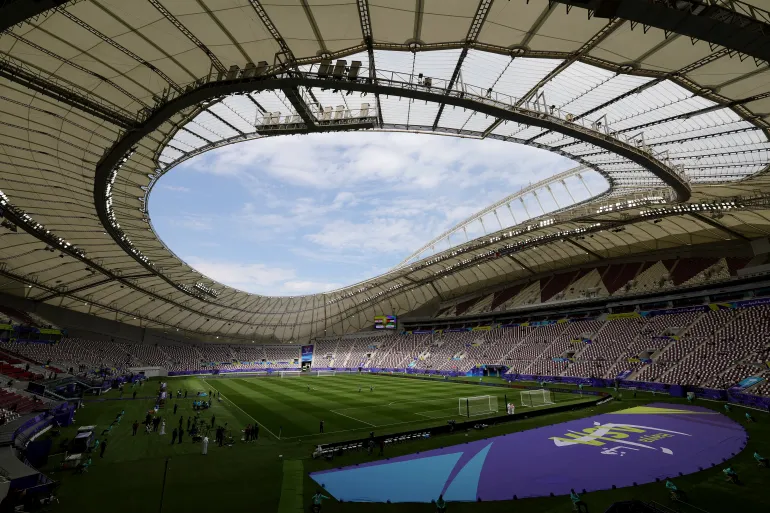
How many teams are taking part?
The 2025 U-17 World Cup is the first to be played in the 48-team format instead of the previous biennial 24-team tournaments.
The participating nations, from six confederations, have been divided into 12 groups, as follows:
⚽ Group A: Qatar, Italy, South Africa, Bolivia
⚽ Group B: Japan, Morocco, New Caledonia, Portugal
⚽ Group C: Senegal, Croatia, Costa Rica, United Arab Emirates
⚽ Group D: Argentina, Belgium, Tunisia, Fiji
⚽ Group E: England, Venezuela, Haiti, Egypt
⚽ Group F: Mexico, South Korea, Ivory Coast, Switzerland
⚽ Group G: Germany, Colombia, North Korea, El Salvador
⚽ Group H: Brazil, Honduras, Indonesia, Zambia
⚽ Group I: US, Burkina Faso, Tajikistan, Czechia
⚽ Group J: Paraguay, Uzbekistan, Panama, Republic of Ireland
⚽ Group K: France, Chile, Canada, Uganda
⚽ Group L: Mali, New Zealand, Austria, Saudi Arabia
What is the tournament format?
The top two teams in each of the 12 groups, along with the eight best third-placed sides, will qualify for the round of 32.
From there on, the tournament will be played in a knockout format, featuring the round of 16, quarterfinals, semifinals and the final.
Why is the U-17 World Cup important?
Youth World Cups are exciting to watch as they offer a glimpse into football’s future, showcasing young talents before they make their mark on the biggest professional stages.
The U-17 World Cup holds special significance as it often serves as a launchpad for the stars of tomorrow.
Retired and current players like Cesc Fabregas, Toni Kroos, and Phil Foden — who went on to shine in the world’s top football leagues — first caught global attention at the U-17 World Cup, each winning the tournament’s Golden Ball award for the best player.
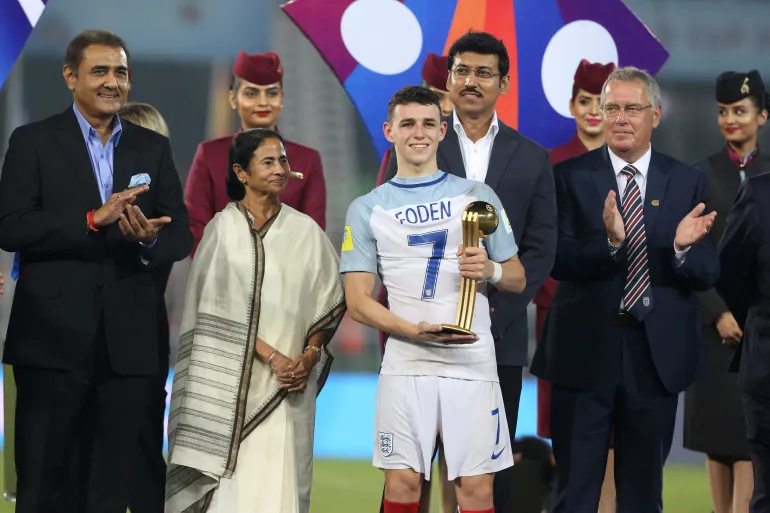
Who are the favourites to win?
Brazil, aiming for a record-equalling fifth U-17 World Cup, will be the frontrunners in Qatar. Heading into the tournament as the reigning South American champions, Brazil are arguably the best team from the region, having held that crown for a record 14 times.
Nigeria’s failure to qualify for this World Cup means the Brazilians are the most successful team at the 2025 edition.
Other contenders for the title are Portugal, who sealed their third U-17 Euro title in June, and France, who often enjoy a deep run at major tournaments.
Although Germany are the defending World Cup winners from 2023, expectations are low this year after they failed to get past the group stage at the Euros.
Twice World Cup winners Mexico are also the title favourites as they make their eighth successive appearance at the finals, while Asian champions Uzbekistan and Saudi Arabia could be the dark horses.
Who are the top players to watch?
Italy’s attacking midfielder Samuele Inacio, the top scorer at the Euros finals with five goals, is one to watch at the tournament. Inacio, who plays for the Borussia Dortmund youth academy, is a constant goal threat thanks to his sublime creativity in the forward line.
France forward Djylian N’Guessan, who scored nine times during the Euro qualifying and finals, is another key player from the region, known for his link-up play, calm finishing and excellent technique. N’Guessan, 17, also played for his nation in the recent U-20 World Cup in Chile.
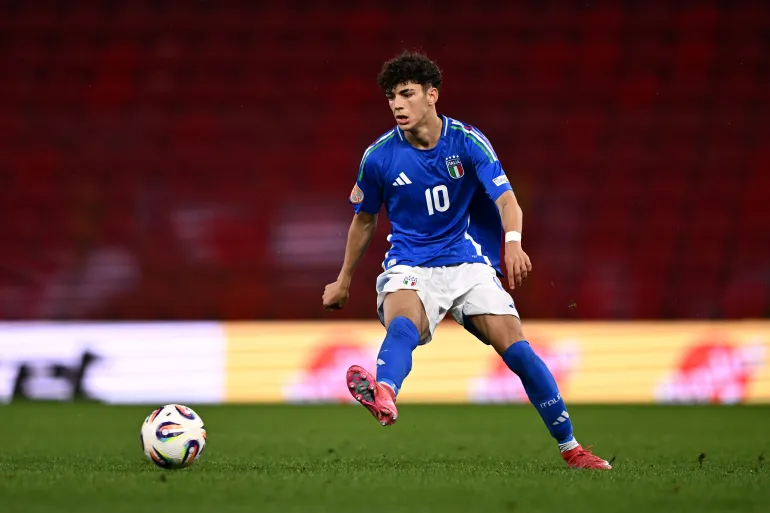
Although Argentina failed to reach the semifinals at the South American U-17 Championship, striker Thomas de Martis finished as the top scorer with six goals. Clinical in the box and great at finishing, de Martis also possesses excellent aerial ability.
Sadriddin Khasanov, named the most valuable player (MVP) in Uzbekistan’s U-17 Asian Cup triumph for his goal-scoring abilities and impressive skills, is also on the list of must-watch players, alongside Morocco’s midfield maestro Abdellah Ouazane, the player of the tournament during their maiden U-17 Africa Cup of Nations title run.
Where to buy tickets and watch the tournament?
Tickets for the U-17 World Cup are on general sale and can be purchased on FIFA’s official platform. Five types of tickets are available, including a day pass, a dedicated ticket for all of host nation Qatar’s matches, and a standalone final ticket.
A day pass, which provides access to six selected pitches, costs approximately $5.50, while the tickets for the final start at about $4.
Broadcasters for selected territories – including Brazil, Italy, the United Kingdom and the United States – have been announced.
Five nations will make history in Qatar by making their debut at the FIFA U-17 World Cup this year 🙌
🇸🇻 El Salvador
🇫🇯 Fiji
🇮🇪 Republic of Ireland
🇺🇬 Uganda
🇿🇲 Zambia pic.twitter.com/oiOyOwyiLj— FIFA (@FIFAcom) April 19, 2025
Live: Israel continues attacks on Gaza as Palestinians fear return to war | Israel-Palestine conflict News
Israeli strikes on Gaza this week have killed more than 100 people following the killing of an Israeli soldier, but the shaky ceasefire continues to hold.
Published On 1 Nov 2025
90s pop star unrecognisable 24 years after name change and chart-topping music career
THIS 90s pop star looks unrecognisable 24 years after his hit single and name change.
The hitmaker is very different as he posted a new clip of him on stage at a performance in Liverpool.
The musician was seen belting out one of his tracks while holding a guitar.
The former solo singer was accompanied by his band, which was formed in 2019.
Some fans may not recognise him, not just because he looks so different, but also because he has a new name.
But have you worked out who this huge star is yet?
It’s none other than Terence Trent D’Arby, who now goes by the name Sananda Maitreya, after changing it in 2001.
His singles Sign Your Name, If You Let Me Stay, and Wishing Well all stormed up the charts on both sides of the Atlantic.
Sananda created The Sugar Plum Pharaohs as part of his new identity and to separate from his past as Terence.
The band was featured on the 2019 live album Live From The Ruins.
In a new post, Sananda shared a clip of the band performing at their latest gig.
He wrote: “The Sugar Plum Pharaohs & I would love to THANK THE DENIZENS OF LIVERPOOL for last evenings great hospitality.
“It is NEVER NOT A PRIVILEGE to entertain the Liverpudlian Spirit.
A Scouser’s embrace is a thing to cherish & hold close to the heart.
“We LOVE YOU, & hope to see you all again sooner rather than later.
“LONG LIVE THE RUTLES!”
PAST SUCCESS
His debut album Introducing The Hardline According To Terence Trent D’Arby went five times platinum, selling 1.5 million copies and earning him a Grammy.
And he had no bigger fan than himself.
In typically humble style he declared the work “the most important album since Sgt Pepper“.
But his follow up album, Neither Fish Nor Flesh, failed to hit the high notes and he fell out with his record company, blaming their “wholesale rejection of it” for its commercial failure.
He became Sananda Maitreya, a moniker which came to him in a series of dreams in 1995, and officially changed his name in 2001.
Claiming his second album had killed his stage persona, he said: “Terence Trent D’Arby was dead… he watched his suffering as he died a noble death.
“After intense pain I meditated for a new spirit, a new will, a new identity.”
Speaking on another occasion about his name change, he said his alter-ego had joined the 27 Club, referring to the tragic artists who died at that age, including Jim Morrison, Kurt Cobain, and Amy Winehouse.
He said: “It felt like I was going to join the 27 Club, and psychologically I did, because that is exactly the age I was when I was killed.”
Fabio Borini: Salford City forward says ‘it’s an addiction’ as FA Cup awaits
Salford City forward Fabio Borini says playing football is “like an addiction” as he discusses the reasons behind his move to the League Two side following his departure from Sampdoria.
READ MORE: It’s the buzz – Salford new boy Borini on playing on as a veteran
On This Day, Nov. 1: Shakespeare’s ‘Othello’ debuts in England
1 of 3 | On November 1, 1604, William Shakespeare’s “Othello” — characters from which are depicted in this painting by Théodore Chassériau — made its debut. File Image courtesy of the Louvre Museum
Nov. 1 (UPI) — On this date in history:
In 1512, the ceiling of the Sistine Chapel in Rome, one of Italian artist Michelangelo’s most famous works, was exhibited to the public for the first time.
In 1604, William Shakespeare’s Othello made its debut. A new production of the famed play starring Denzel Washington and Jake Gyllenhaal is expected to open on Broadway in 2025.
In 1755, an earthquake in Lisbon, Portugal, killed 60,000 people.
In 1800, U.S. President John Adams and his family moved into the newly built White House after Washington became the U.S. capital.
In 1915, Parris Island was officially designated a Marine Corps Recruit Depot used for the training of enlisted Marines.
In 1938, Seabiscuit beat War Admiral in horse racing’s “match of the century.”
In 1945, Ebony magazine, founded by John H. Johnson, published its first issue.
In 1950, two Puerto Rican nationalists tried to force their way into the Blair House in Washington in an attempt to assassinate U.S. President Harry Truman.
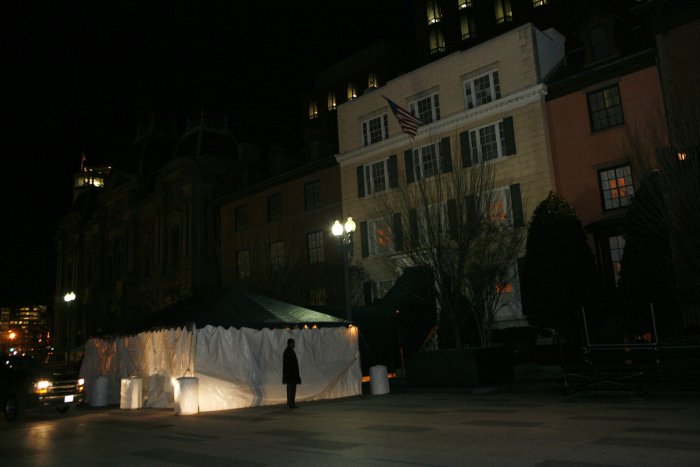
File Photo by Aude Guerrucci/UPI
In 1952, the United States tested the world’s first hydrogen bomb, code named Ivy Mike, on Eniwetok atoll in the Pacific Ocean.
In 1990, McDonald’s, under pressure from environmental groups, said it would replace plastic food containers with paper.
In 1993, the Maastricht Treaty took effect, formally establishing the European Union and leading to the creation of the Union’s single currency, the euro.
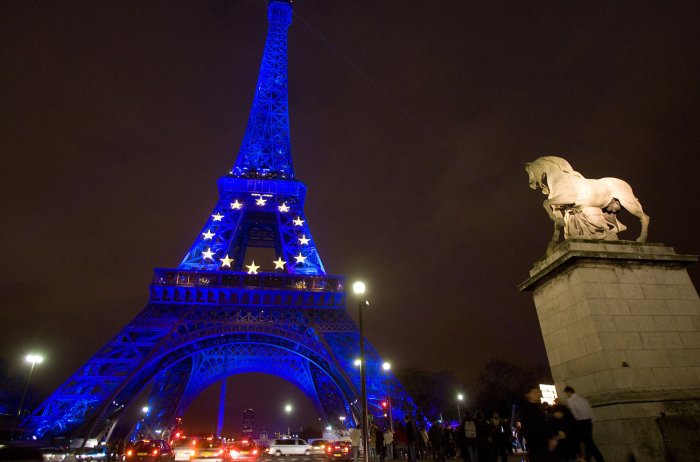
File Photo by Eco Clement/UPI
In 2008, Maj. Sebastian Morley, the top British Special Forces commander in Afghanistan, resigned to protest what he called lack of proper equipment for combat troops. He blamed “chronic underinvestment.”
In 2013, a U.S. drone strike killed Hakimullah Mehsud, leader of the Pakistani Taliban, and four other militants.
In 2023, the Texas Rangers defeated the Arizona Diamondbacks 5-0 to win Game 5 and the World Series. It was the first championship win in the team’s 63-year history.
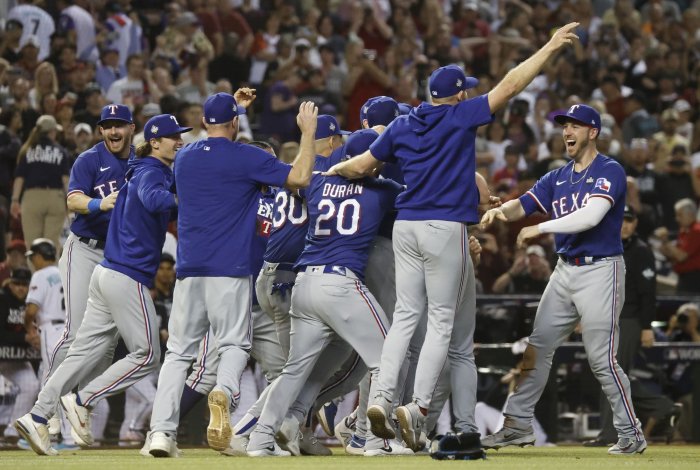
File Photo by John Angelillo/UPI
Live: Israel continues attacks on Gaza as Palestinians fear return to war | Israel-Palestine conflict News
Israeli strikes on Gaza this week have killed more than 100 people following the killing of an Israeli soldier, but the shaky ceasefire continues to hold.
Published On 1 Nov 2025
I skied up to the highest mountain hut in the Swedish Arctic. My reward? A whiteout … | Sweden holidays
The light coming through the sleeper train window wakes me. It’s nearly time. Climbing down the ladder past the other snoozing occupants, I head into the corridor. A few hours ago there were only trees, an endless unfurling ribbon of spruce and birch. Now there is snow, vast banks of it. And sometimes, when the train roars through a big drift, great spumes of white blast out on either side, blocking any view.
In the restaurant car, I watch the map on my phone as a blue dot approaches a straight dashed line. A frozen lake and distant pale mountains appear. Then at 6.09am we cross the Arctic Circle. Forty-eight hours previously, I had been in London St Pancras station, queueing for the Eurostar. Now, five trains later, never having left terra firma, I am in the Arctic. Most of my fellow travellers are Swedes with hefty bags of skis and well-stocked sledges that look expedition-ready. With their weathered faces and lean muscle, they look intimidatingly capable.
My plan is a mini-expedition of my own: to ski to the highest mountain hut in the Swedish Arctic, and get back down in one piece. Because I have never used the particular type of skis required for going uphill, the plan seems ambitious.
The train passes through the mining town of Kiruna, then skirts the 43-mile (70km) long lake of Torneträsk. A pair of moose graze on the stunted birch trees. There are no more pines; we have passed beyond their limit of endurance. All around is the ethereal pale beauty of the hills, their summits soft with wind-puffed quiffs of snow powder.
At Björkliden, I disembark. The ski station is right next to the railway, which has almost reached its northernmost limit, curling through one more ski village, Riksgränsen, before heading west to the Norwegian port of Narvik. Within two hours of arriving, I am on skis, gingerly tackling a beginners’ slope.
Skiing in the Swedish Arctic has some immediate obvious differences to more southerly locations. After the spring equinox, the days are longer. By mid-May there is no darkness at all. You ski under the midnight sun. The weather is changeable and people pay special attention to the wind: the chill factor can be extreme. But there are similarities, too: I am still a wobbly skier. I take it easy. I spend a lot of time talking to veterans of the climb up to Låktatjåkko mountain hut.
“It’s 9km,” they tell me. “The last bit can be a challenge.”
I practise putting on my skins: long bands that fit over the underside of the skis and make them refuse to go backwards, even downhill. I cannot help wondering if it might be easier to walk, but I am soon corrected. “It’s going to snow heavily tonight. You would just sink up to your waist. And you need the skis to get back down.”
The advice is to wait for the supply wagon to leave at 10am. It’s a tracked snowplough and will create a route to follow. There are also marker poles every 25 metres. I’m advised to wear an avalanche alarm and carry a lightweight folding shovel.
At 10am the next morning, I am outside the hotel, watching a company of Swedish soldiers in white combat suits ski away. The snowcat is loading up with food. There are passengers too. The driver confirms that it is often possible to go up without skiing at all, but there are no more seats.
I set off in the wake of its broad tracks. The ski skins work well. The sun is out, there is no wind and the views are stupendous. Five minutes later, I’m in a whiteout, struggling to spot the next marker pole, the snowcat long gone and its tracks fast disappearing. The temperature is -6C, and the wind is in my face and strengthening. I start counting steps. Despite the cold, I am down to two layers of clothing, wishing I had remembered the advice of the explorer Leo Houlding: “Be bold, start cold.” My respect for polar explorers has reached an all-time high. My respect for Sweden, too. What a marvellous country! They trust people to know their limits, look after themselves and be as tough as reindeer jerky. In my case, I’m not sure their trust is entirely well placed.
The final climb, as promised, is a tough one, but then the hut comes into sight, almost buried in snow, looking like the last frozen outpost on the far side of a freezing galaxy. It takes time to find the door.
Inside, the custodians, Vilma and Kicki, are preparing waffles with cloudberry jam, and the log burner in the snug is roaring. This astonishing retreat was constructed in the late 1930s and is now an acknowledged classic of its type, with simple bunkrooms, cosy public areas and a sauna. The only other guests are Martin and Johan, local skiers who have just made the harder ascent from Riksgränsen.
I munch through a plate of waffles. The top of the mountain is a tantalising 200 metres above the hut. I really want to make it. “Don’t ski,” advises Vilma. “Use snowshoes and just keep heading north.”
When blue sky reappears, I strap on the snowshoes and set off. I manage about 100 metres of the climb before the whiteout returns. Using a compass I plod on, but the lack of any visible markers is playing weird tricks on me. I spot a snowmobile up ahead, manned by two soldiers, but as I approach, the soldiers transform into swans and fly away. At that moment, I walk face-first into a snowbank.
This is my initiation into whiteout disorientation. Some skiers have reported feeling that they are moving when stationary; others, the opposite. Unhindered by visual reference points, the brain constructs its own reality.
I check my altimeter. I am 30 metres below the summit, but I can’t see how to get around this snowbank. My own tracks are now disappearing, so I return to the hut on a compass bearing and reward myself with more waffles.
The few day-trippers are gone, the fire is warm and the storm outside howling. Martin and Johan watch the weather anxiously from their armchairs. “Look,” shouts Martin at one point, “blue sky! I think it’s clearing.” But by the time he reaches the window, the whiteout has resumed. The evening passes in a fug of beer, stories and laughter.
In the morning, the storm is still raging when the snowcat arrives. Martin and Johan are willing to ski down with me, but fearing I will hold them up, I cadge a lift. The next day, I move to Riksgränsen. There is a choice of accommodation, ranging from the boisterous fun of the main hotel to the superlative charm of Niehku Mountain Villa. Built in the old railway turntable buildings and decorated with a fascinating display of historical photos, this boutique hotel also has an excellent restaurant.
The next morning, the weather has improved and I am treated to a perfect day on the mountains, happily tootling around on blue runs while watching the experts carve powdery curves down near-vertical mountain slopes. It looks amazingly dangerous, but these locals know their limits. And so do I. Taking the easy route down, I make it to the cafe and order waffles with cloudberry jam.
The trip was provided by Visit Sweden. The writer travelled on a seven-day Interrail pass (adult £335, youth £252, senior £302, under-12 free). A one-day ski pass is £39. Låktatjåkko mountain lodge costs from £150 half-board. Further information at laplandresorts.se
‘Dracula’ review: Radu Jude returns with a three-hour, skit-laden satire.
As attention spans keep getting whittled down, intellectually impish Romanian satirist Radu Jude continues to go longer and longer, his latest act of cinematic disobedience the nearly three-hour mythbuster “Dracula.”
But you will not be getting a worshipful retelling of author Bram Stoker’s horror classic. For that, call Francis Ford Coppola. Rather, Jude has Frankensteined together a grab bag of notions about the vampire saga that is his country’s most well-known cultural export — originating with real-life medieval slaughterer Vlad the Impaler but most famously immortalized by a 19th century Irish author. Jude turns it into a vaudeville that, even at its most entertaining, is best described by a common bat-related term that’s more scatological.
For the last decade, festival favorite Jude has turned contemporary Romania’s fault lines into his own jangly, caustically funny microcosm of the world’s glaring sociopolitical hypocrisies, from the warping of the past (“I Do Not Care if We Go Down in History as Barbarians”) to sexual attitudes (“Bad Luck Banging or Loony Porn”) to late-stage capitalism (“Do Not Expect Much From the End of the World”). Jude is especially trenchant about how these realities are sold to us, and what’s inherently funny and tragic about that.
Halfway between an endurance test and a mad romp, “Dracula” is still proof he’s cinema’s brainiest, raunchiest crank: Eastern European’s own X-rated Monty Python. “Dracula” was birthed initially as a jokey response to his anti-commercial tendencies — as if Jude could ever make a conventional horror movie. But it still managed to percolate (fester?) until he’d found a unifying idea across a dozen or so vignettes of prurient humor and social commentary: the twinned legacy of a bloodthirsty despot who still stirs national pride, and an invented, Hollywoodized legend. All of it is engineered around the brutality of capitalism, which bites, slurps, then discards. It’s economics and entertainment.
As for that sucking sound in Jude’s antic organizing concept, it’s artificial intelligence: His proxy narrator is a creatively blocked filmmaker (Adonis Tanţa, in one of many roles) turning to an AI chatbot to generate ideas for his vampire film. The film’s cheeky opening is a succession of AI-generated Vlads/Draculas of all genders, colors and ages. From there, the intermittent interludes of hilariously nonsensical AI slop visuals — whether inoffensively ugly, as when inserted into a doomed peasant love story, or pornographic, when the prompt is sexing up Coppola’s 1992 version — are a consistently funny middle finger directed at a grotesquely vampiric, art-leeching technology.
The various “generated” stories and sketches, meanwhile, break up a narrative about a sleazy Dracula dinner theater in Transylvania that, when its underpaid, slave-labor leads decide to bolt mid-performance, gives dissatisfied customers a (ahem) stake in the outcome. The punchy bits work best, as when a reincarnated Vlad interrupts a modern-day tour of his home to clap back at rumors (“I didn’t kill rats!”) or a very Jude-like scenario in which Dracula is a ruthless video game company head exploiting his workers. Less effective is an overlong adaptation of the first Romanian vampire novel, its phone-shot cheapness and amateur theatrics eventually grating, and a Chaucer-adjacent fable about a cursed farmer’s harvest of phalluses that is more obnoxious than clever.
With Jude, of course, vulgarity is often the point, and maybe, as two hours becomes three, the excessiveness is part of the point too. When will we all be worn down by stupid consumerism? It doesn’t make the devilish, insane and extreme “Dracula” any easier to take as a skewering of sensibilities and conventions. As often as you may be tickled by its fanged silliness, you’ll also be drained.
‘Dracula’
In Romanian and English, with subtitles
Not rated
Running time: 2 hours, 50 minutes
Playing: Opens Wednesday, Oct. 29 at Alamo Drafthouse DTLA and Laemmle Glendale
Shohei Ohtani expected to start for Dodgers in World Series Game 7
TORONTO — The Dodgers have forced a Game 7 in the World Series.
And Shohei Ohtani is expected to be their starting pitcher.
In what will be just four days removed from his six-plus-inning, 93-pitch start in Game 4 of this World Series, Ohtani will likely serve as the team’s opener in Saturday’s winner-take-all contest, according to a person with knowledge of the situation not authorized to speak publicly.
While Ohtani almost certainly won’t make a full-length start, he should be able to get through at least two or three innings (depending on how laborious his outing is). Four or five innings might not be out of the question, either, even in what will be only his second career MLB outing pitching on three days’ rest.

The only time Ohtani did so was in 2023, when he followed a rain-shortened two-inning start at Fenway Park against the Red Sox with a seven-inning outing four days later.
Saturday, of course, will come under entirely different circumstances, in what will be the first seventh game in a World Series since 2019.
By starting Ohtani, the Dodgers would ensure they wouldn’t lose his bat for the rest of the game, thanks to MLB’s two-way rules. If he were to enter in relief during the game, the only way he could stay in afterward is if he shifted to the outfield (since MLB’s rules stipulate that a team would lose the DH spot under such circumstances). Starting him also eliminates any complications that would come with trying to find him time to warm up if his spot in the batting order arose the inning prior — something that would have made it potentially more difficult for him to be able to close out the game.
Ohtani has completed six innings in each of his three previous pitching appearances this postseason, with a 3.50 ERA and 25 strikeouts in 18 innings.
The Dodgers should have options behind Ohtani. Tyler Glasnow will likely be available after needing just three pitches to get the save in Friday’s wild finish. Blake Snell also said he would be available after his Game 5 start on Wednesday.
In the bullpen, Roki Sasaki figures to be at manager Dave Roberts’ disposal, as well, despite throwing 33 pitches in one-plus inning of work on Friday.
Roberts said everyone short of Game 6 starter Yoshinobu Yamamoto would be available.
Dodgers win Game 6 against Blue Jays in World Series to force decider | Baseball News
Los Angeles Dodgers send the World Series to a decisive seventh game after defeating Toronto Blue Jays in Canada.
Published On 1 Nov 2025
The Los Angeles Dodgers kept alive on Friday their hopes of becoming Major League Baseball’s (MLB) first repeat champion in 25 years, with a 3-1 victory over the Toronto Blue Jays that pushed the World Series to a decisive seventh game.
With their backs against the wall and facing elimination for the first time this postseason, a Dodgers team that had no room for error got six solid innings from starter Yoshinobu Yamamoto while Mookie Betts and Will Smith provided the offence.
Recommended Stories
list of 3 itemsend of list
Toronto thought they tied the game on an inside-the-park homerun in the ninth on a bizarre play, when the ball was lodged at the bottom of the outfield fence where Dodgers outfielder Justin Dean immediately raised his hands to rule the play dead.
A video review went the Dodgers’ way and determined it was a ground rule double, which left Toronto with runners on second and third with not outs.
Ernie Clement then hit an infield pop and Andres Gimenez lined out to left before Kike Hernandez turned the double play when he fired the ball to second base to get Addison Barger out and end the game.
The Dodgers victory put on hold, for one day at least, a coast-to-coast party in Canada, where fans of the lone MLB club are desperate to celebrate the Blue Jays’ first World Series triumph in 32 years.
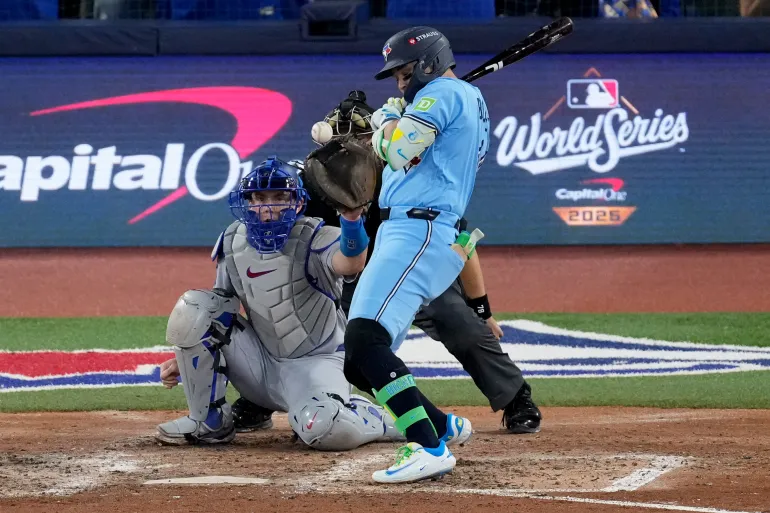
Dodgers’ season on the line in Game 6
As they were at the start of the season, the Dodgers came into the World Series as an overwhelming favourite and with few expecting the Blue Jays to produce much of a challenge and even fewer calling for it to go the distance.
With their season on the line, Los Angeles opened the scoring in the third on a run-scoring double by Smith, before Betts singled in a pair of runs to put Los Angeles ahead 3-0.
Barger led off the bottom half of the third with a double before scoring on a George Springer single to get the Blue Jays within two.
The Dodgers’ starting rotation had been the team’s strength this postseason, but the Blue Jays picked it apart en route to grabbing a 3-2 lead in the World Series before Yamamoto once again took matters into his own hands.
The Japanese ace, who threw complete-game gems in his previous two starts, struck out six batters and allowed one run on five hits across six innings before the Dodgers turned to a bullpen that has been their weak link all season.
The Blue Jays threatened in the eighth when they got runners on first and second with one out before Roki Sasaki retired Bo Bichette and Daulton Varsho grounded out to end the inning, before once again getting close in the ninth.
Play was temporarily disrupted in the sixth inning when a spectator scaled the outfield wall and stormed the field with a United States flag before he was promptly taken down by security guards and escorted away.
Game 7 will be played on Saturday in Toronto.


